Girth Fitting Information
Kent & Masters girths are measured in the standard way - buckle end to buckle end.
- Make sure you fit the girth with the curved section facing forward (towards the forelimbs).
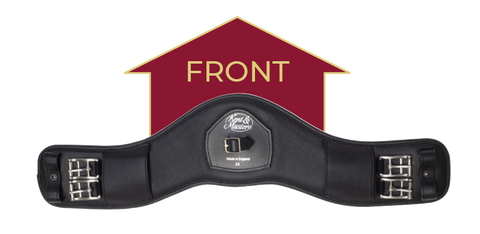
Kent and Masters short girth facing front
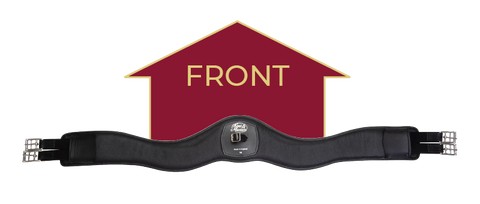
Kent and Masters long girth facing front
- Always girth up evenly on both sides.
- When fitting the short girth, fit the longest length possible in order to get the buckles away from the pressure-sensitive area behind the elbows. Fit the girth’s top edge as close to the bottom edge of the saddlecloth as possible. As a general, on a dressage saddle for example, aim to have two billet holes between the top of the girth and bottom of the saddlecloth, on both sides, when fully tightened.
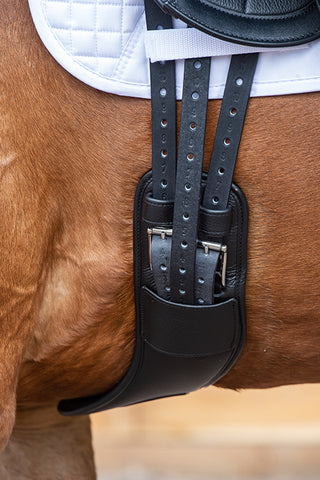
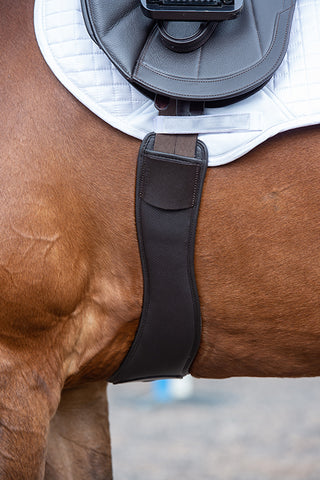
- Always thread the billet through the buckle before pulling the girth up. Do not use the leather keepers above the buckle to do the girth up - you will break them and this is NOT covered by the guarantee.
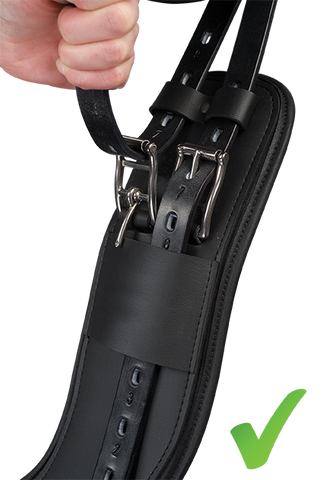
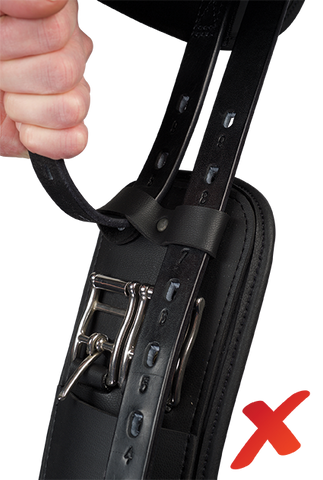
Do not use the leather keepers above the buckle to do the girth up
- Don't pull the front leg forward after girthing up – this simply draws more skin forward into the area behind the elbow, increasing the risk of rubbing or girth galls.





